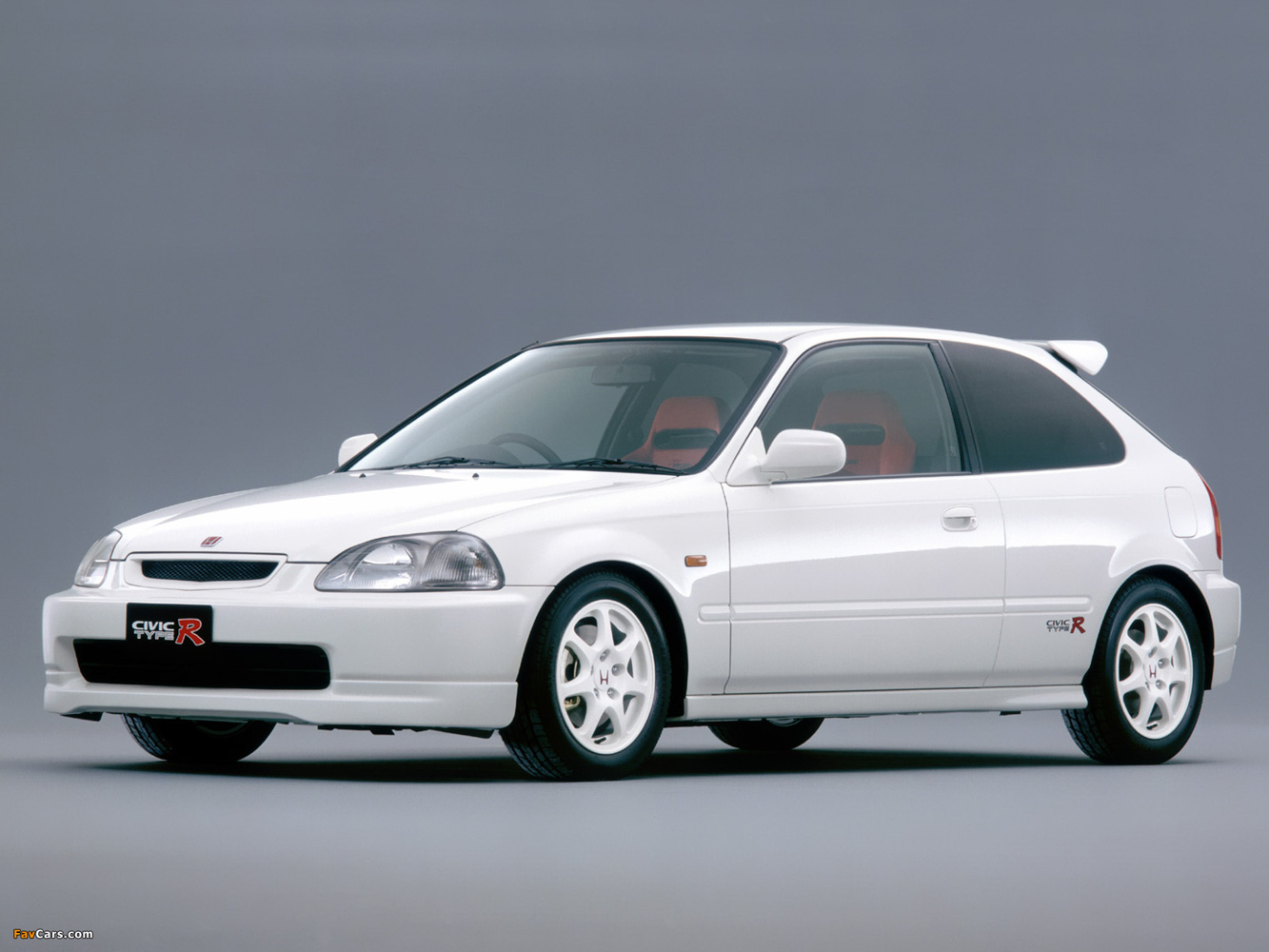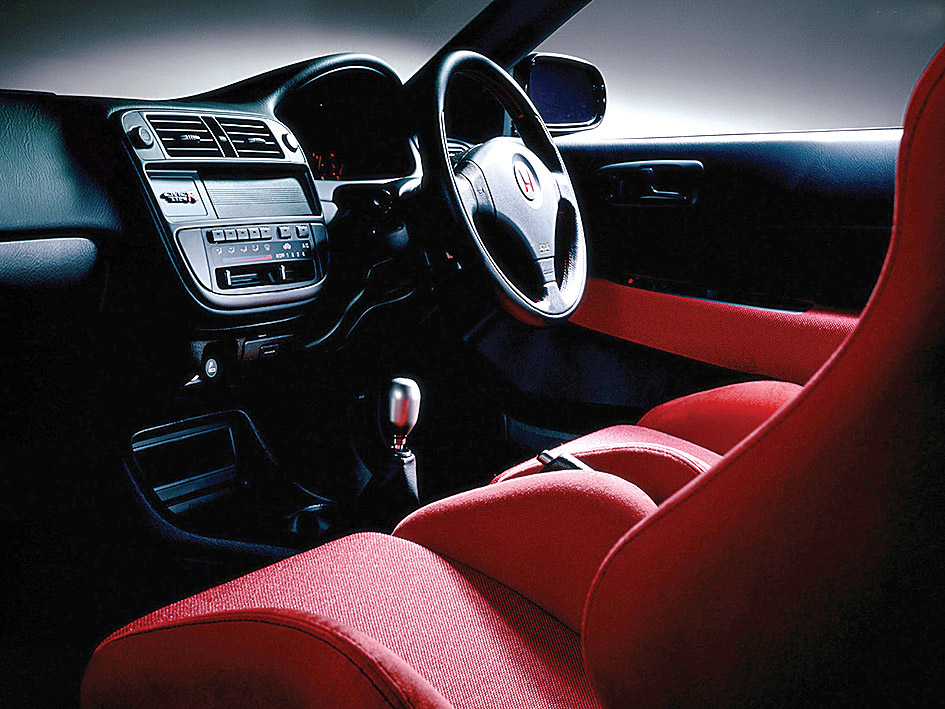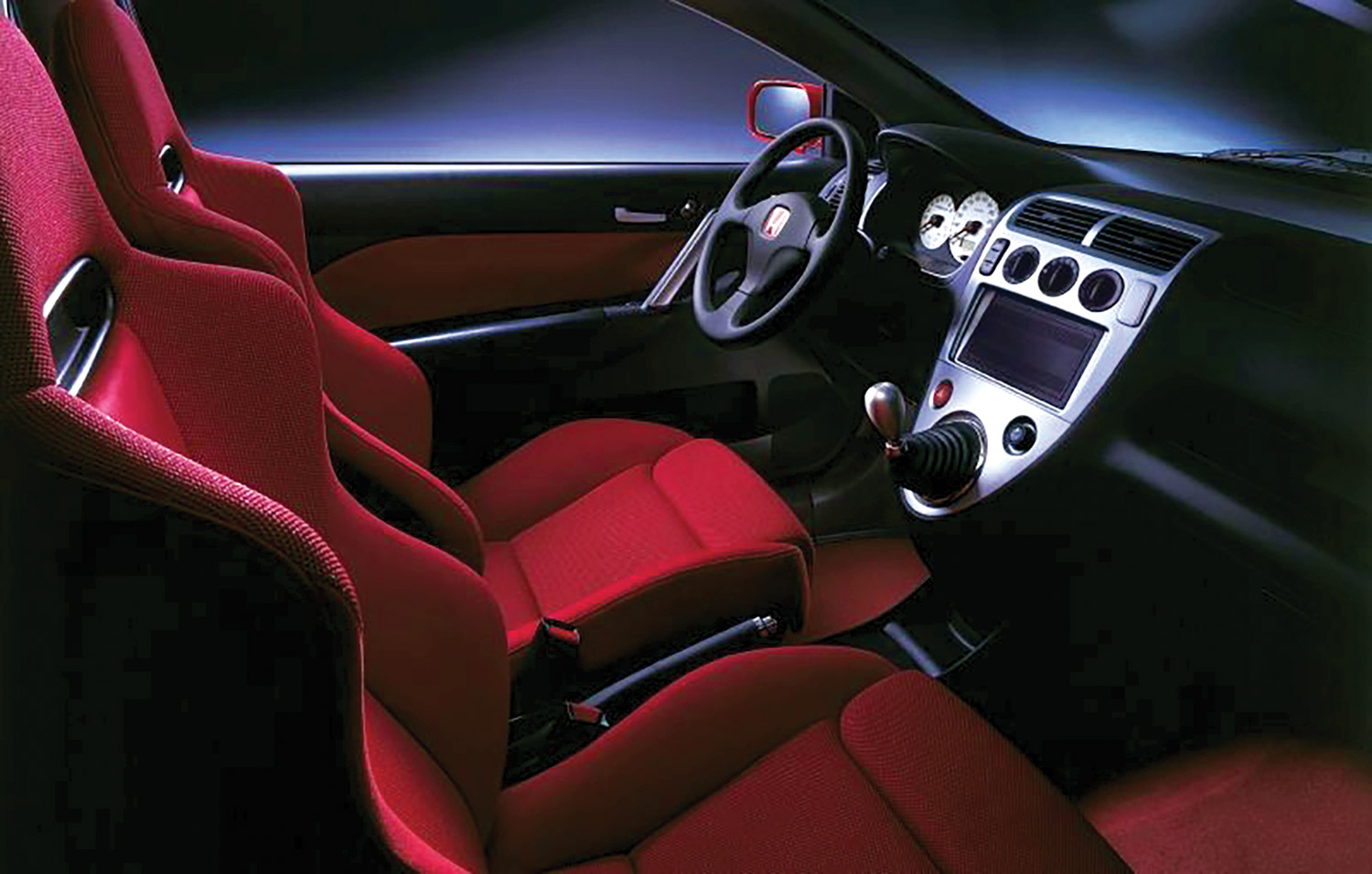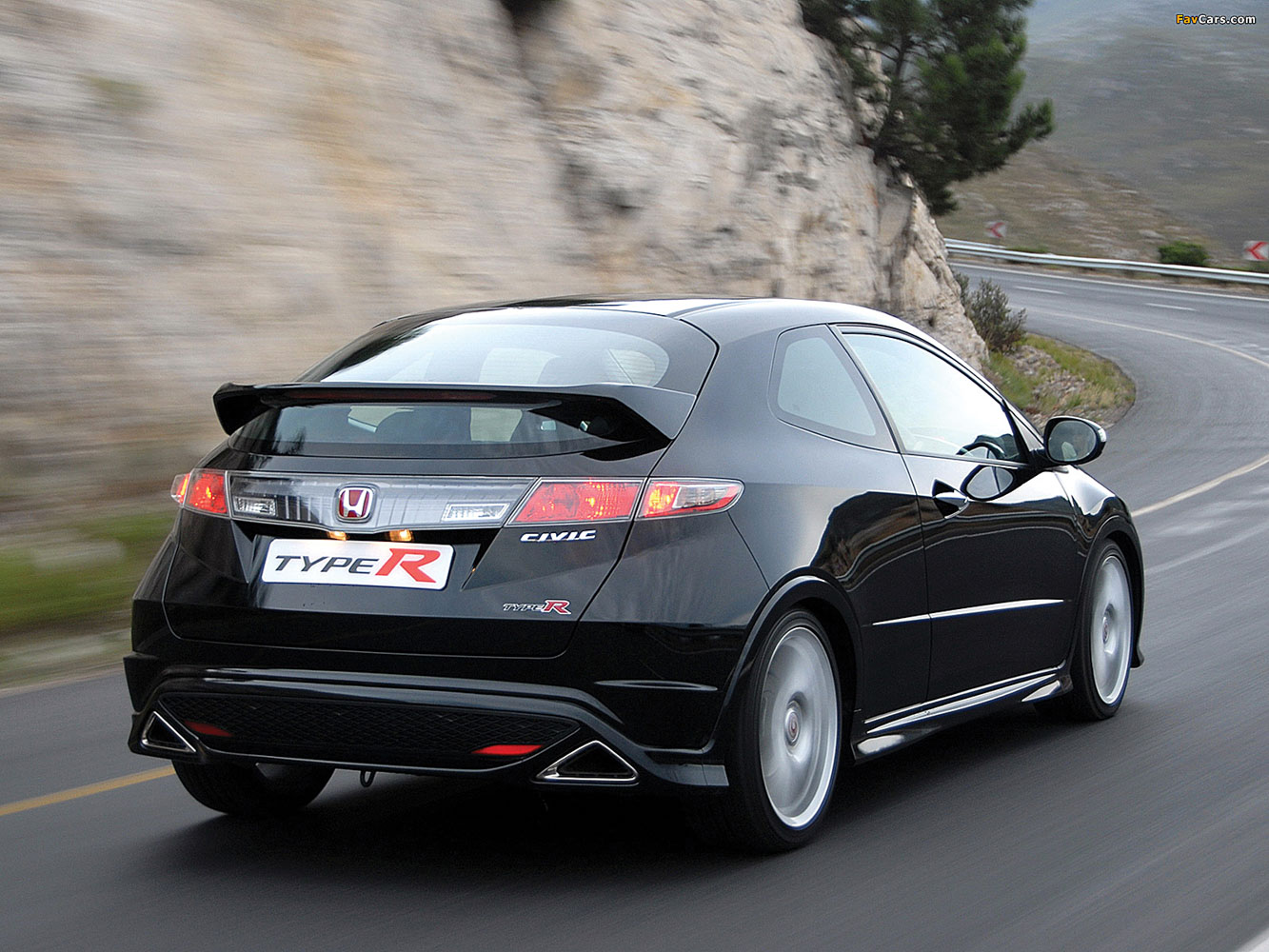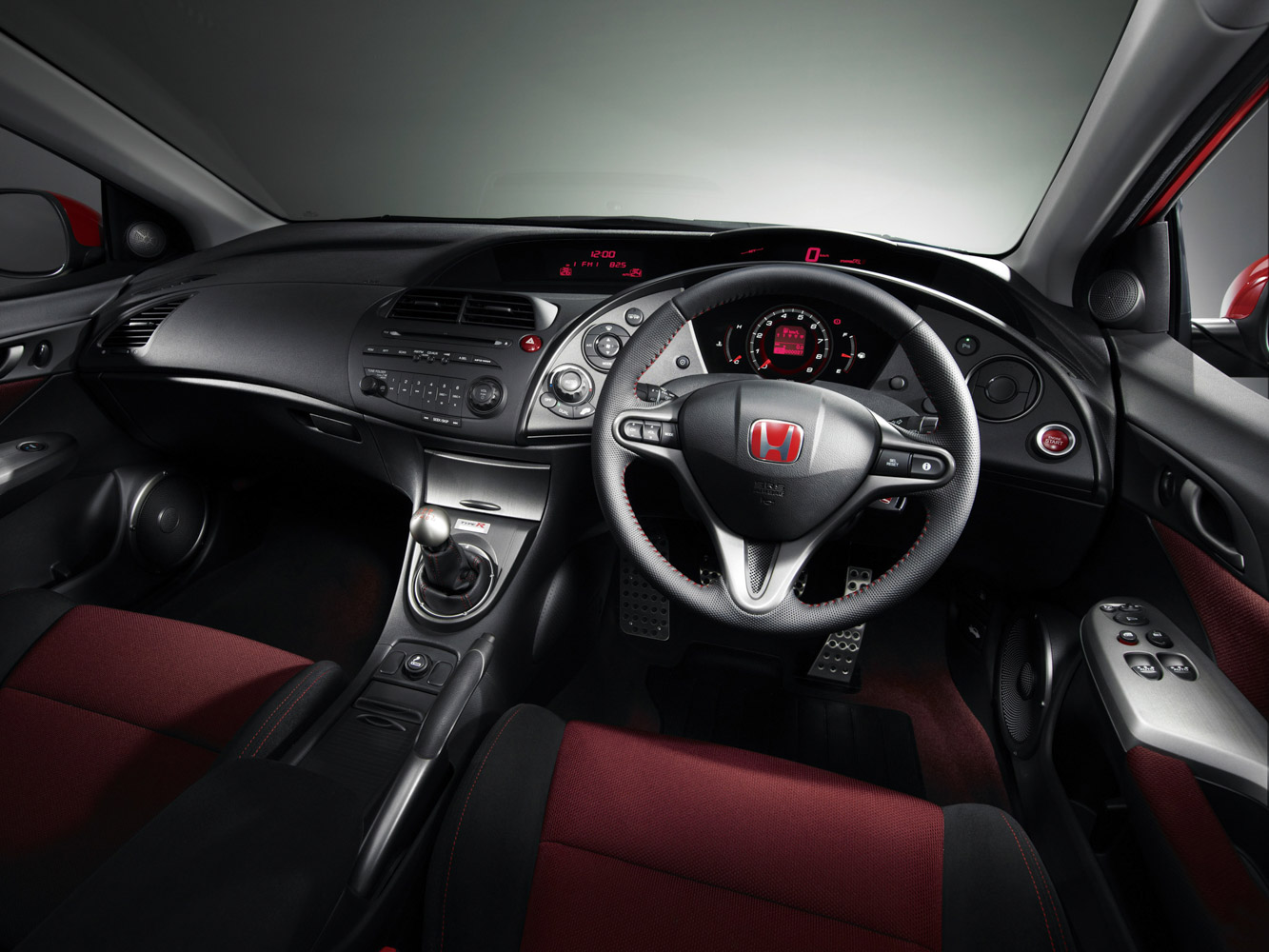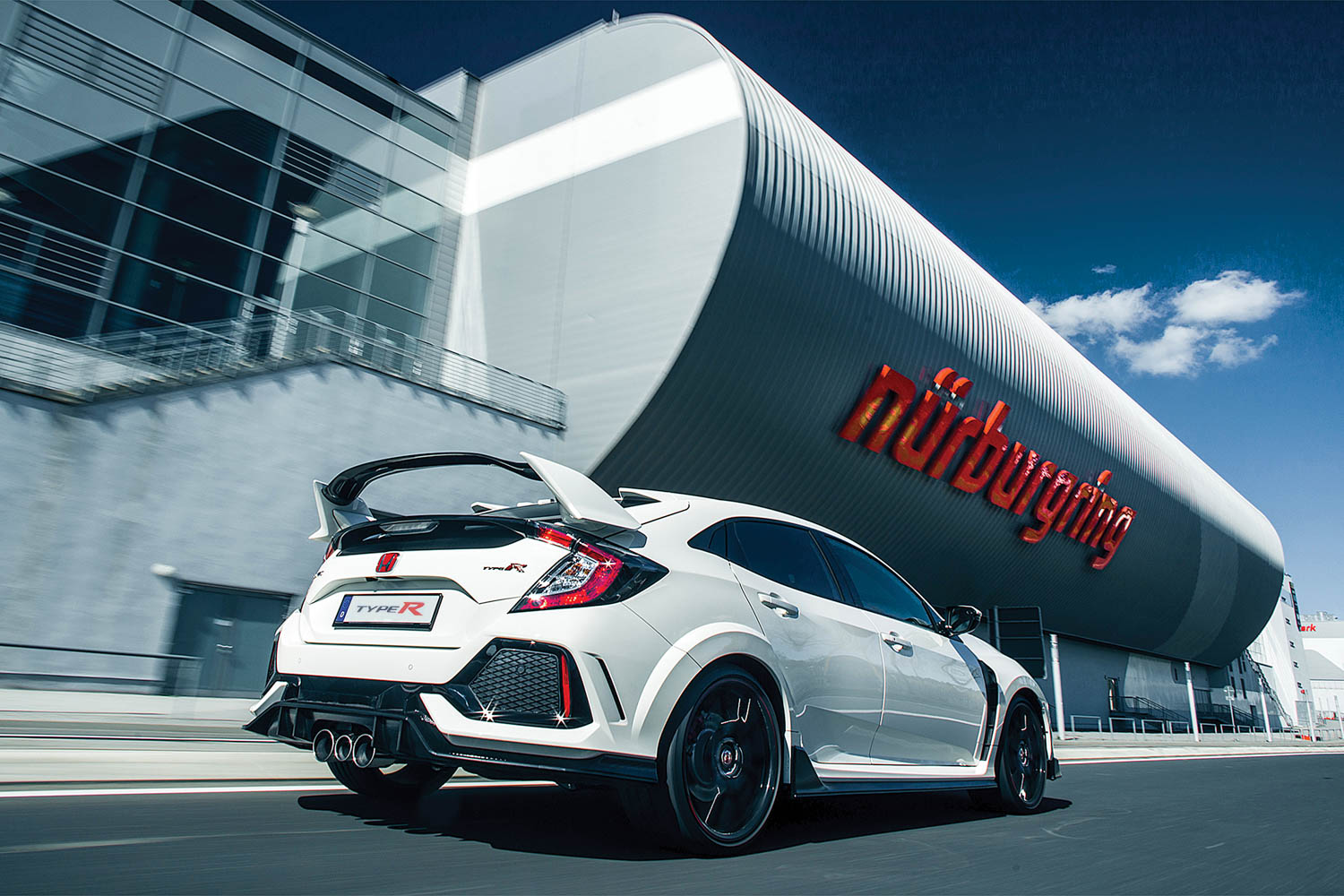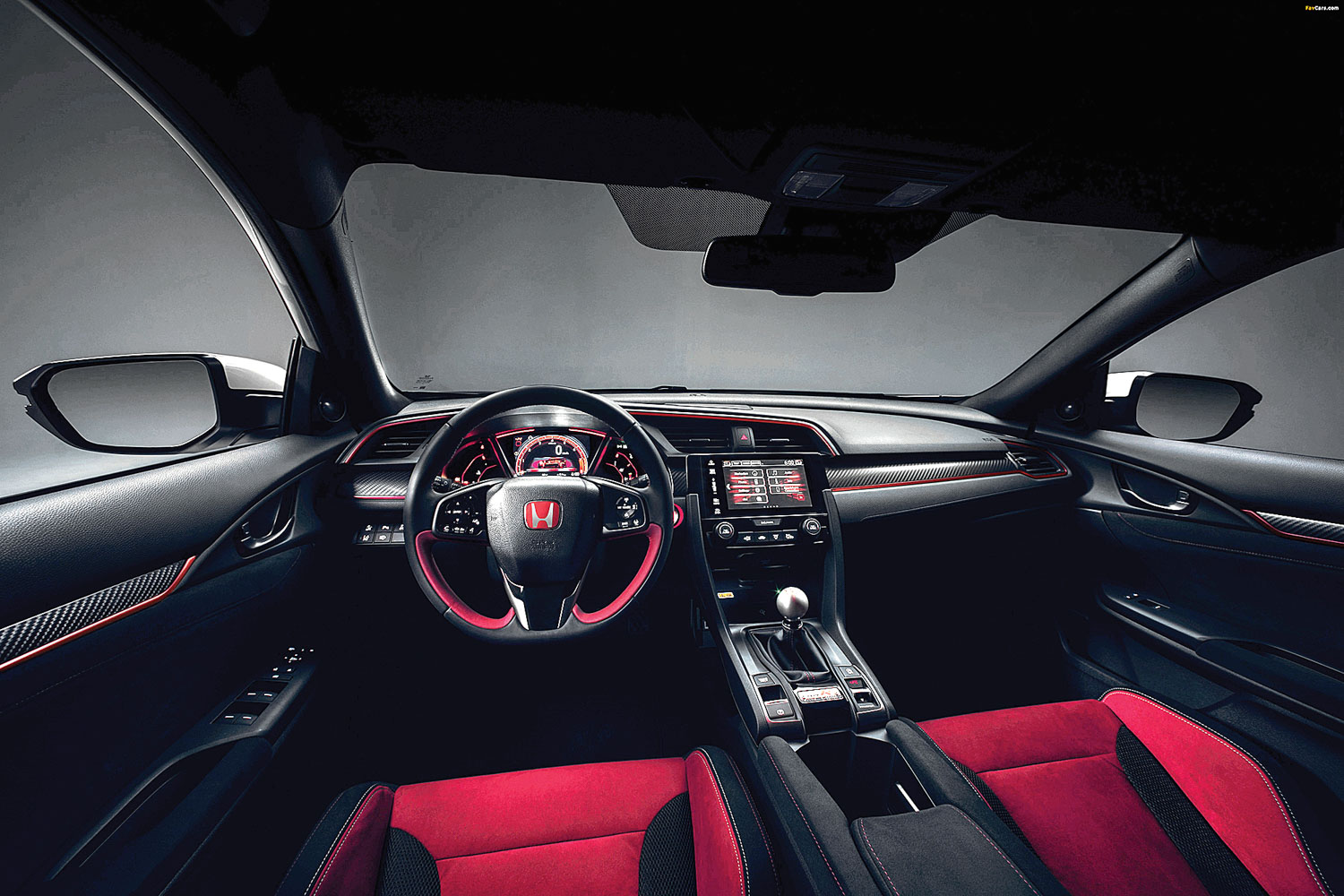The Civic Type R (CTR) range was built on screaming engines, stiff bodies, and solid power-to-weight — an ethos that’s definitely not been lost with the introduction of the latest snail-powered incarnation
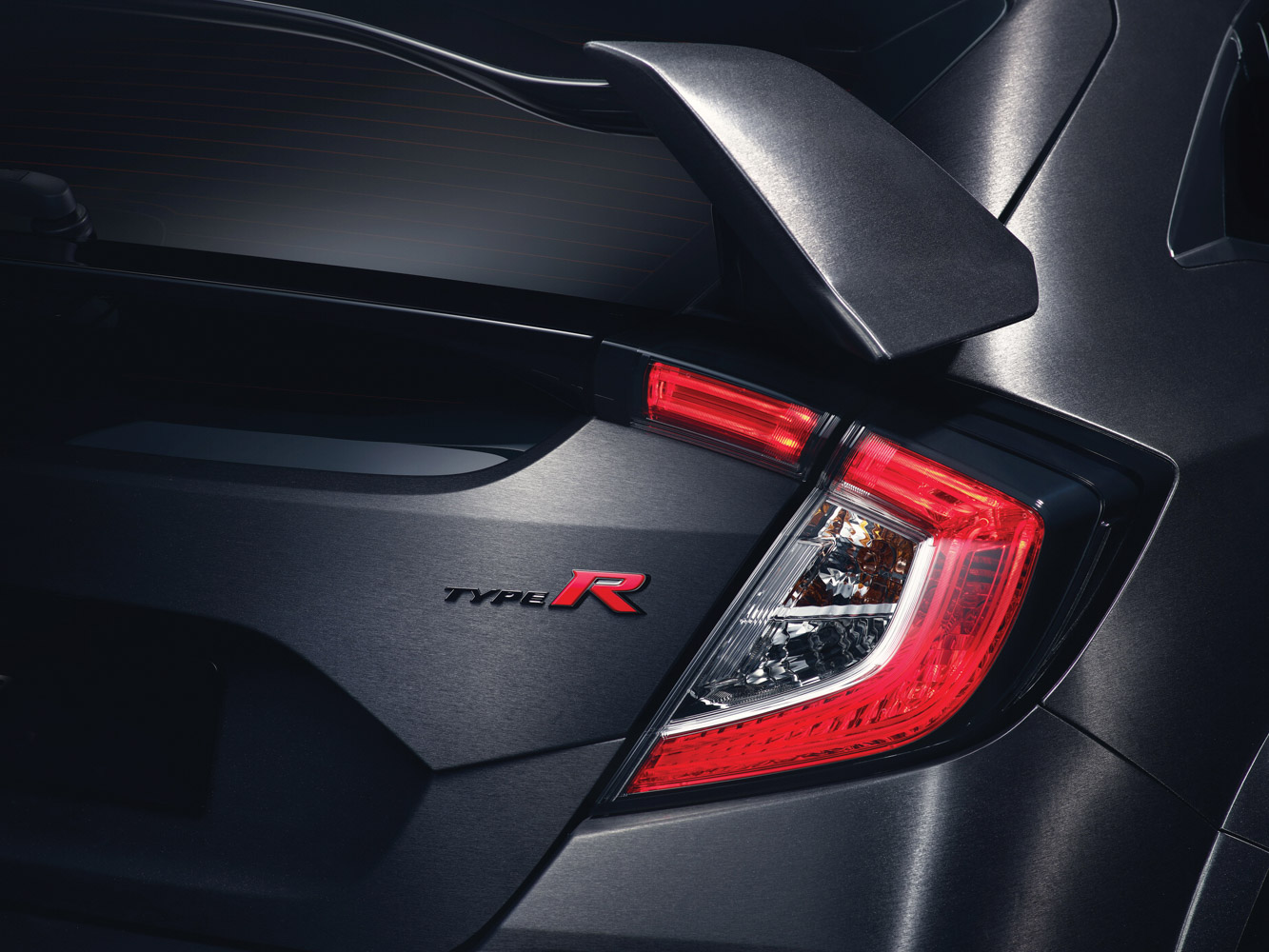
With the new generation of Honda Civic Type R (FK8) set to drop in September, we wanted to take a look back at where it all began and at those that have worn the Type R badge in the past. Designed as a simple recipe that was available straight from the factory — combine a little bit of power with a stiff-chassis for a nimble, track-ready, street-legal speed demon — the CTR has always had a focus on minimal weight; maximum tunability; and having further potential in the engine, suspension, and braking departments. It has long been a staple on professional circuits and used for street duties over the last 20 years — this isn’t surprising considering the diehard fan base it has amassed along the way.
As the model evolved, it tread the fine line between a hefty price-tagged, impractically fast hot hatch, and a run-of-the-mill grocery-fetcher. It’s this blend that people love: a race-bred machine built for day-to-day driving. Most of those that own a CTR now aren’t casual enthusiasts that recognize what the package has to offer; instead, they’re lovers of the model range.
Let us take you on a trip down memory lane while we break down what it is that turns owners into fanboys, from the very first model to the latest.
EK9 (1997–2000)
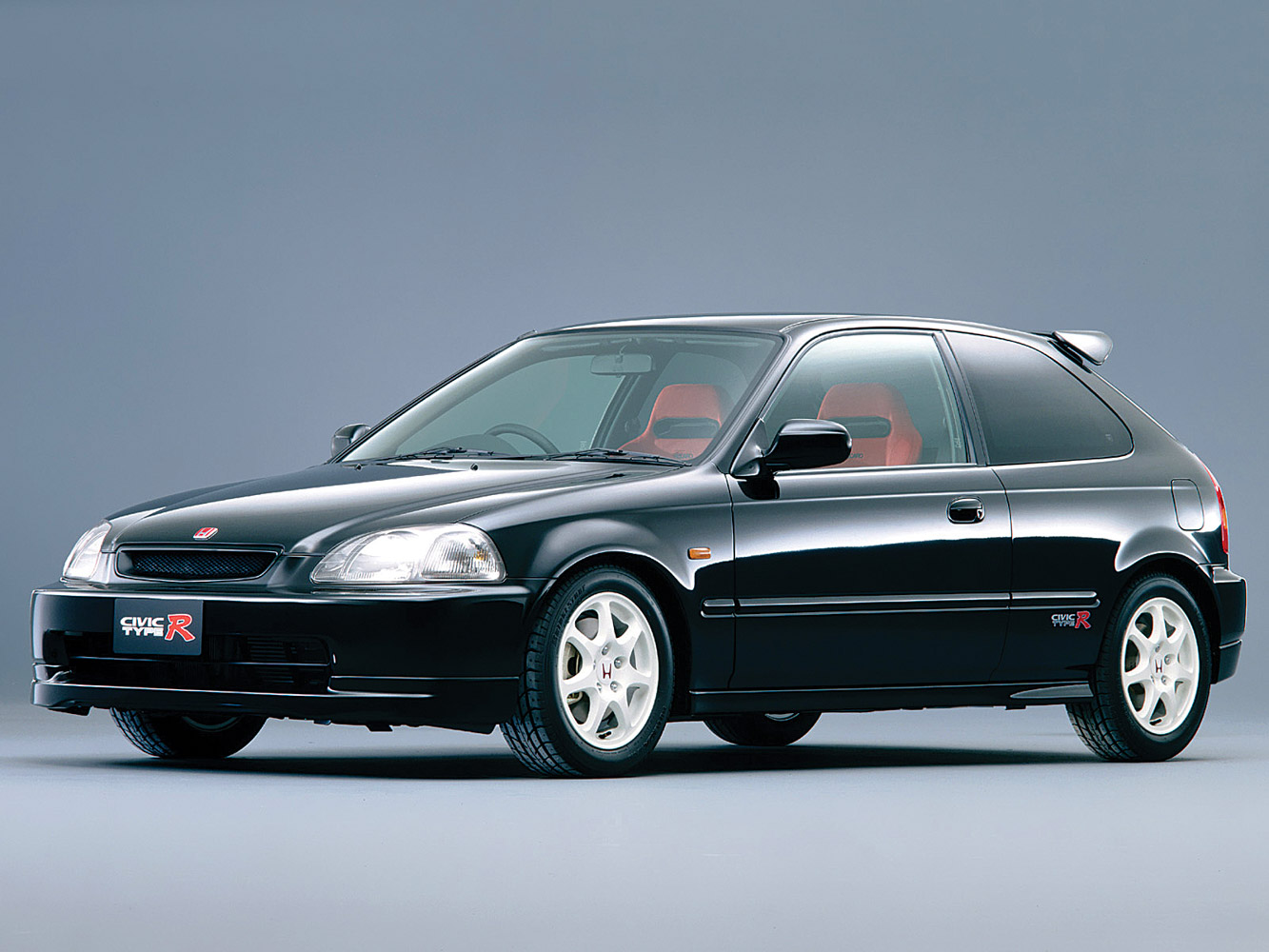
While the Type R badge didn’t appear for six generations of Honda Civics — it had already adorned both the NSX-R and Integra Type R (ITR) — the 1997 release of the EK9 CTR saw the first-gen of the super Civics. Built to replicate the success Honda found in the fabled ITR, the EK9 was rather special. It was based on the JDM EK4 SiR, with the chassis removed from the production line in Suzuka, Japan, and seam welded to improve rigidity and handling, while Honda also meticulously removed weight to create its characteristic lightweight handling, losing all sound-deadening and other superfluous trim pieces in order to reduce the curb weight.
But it was the choice of heart that really set the EK9 apart from its brethren — a hand-built B16B that embodied Honda’s racing spirit. This was a destroked, yet punchy, version of the ITR’s B18C; the 1.6-litre uses the same block (which is taller than that found in the B16A by approx 17mm), incorporating a balanced crank the same stroke as the B16A (77.4mm). Longer rods are used to make up the difference, with an increased rod to stroke ratio over the B16A, while the higher compression pistons are used to bring compression up to 10.8:1. The head is ported and polished by hand, housing redesigned cam profiles. The package redlined at 8500rpm and produced a staggering 86kW per litre, for a total of 137.95kW — one of the highest ever power outputs per litre for a production naturally-aspirated engine.
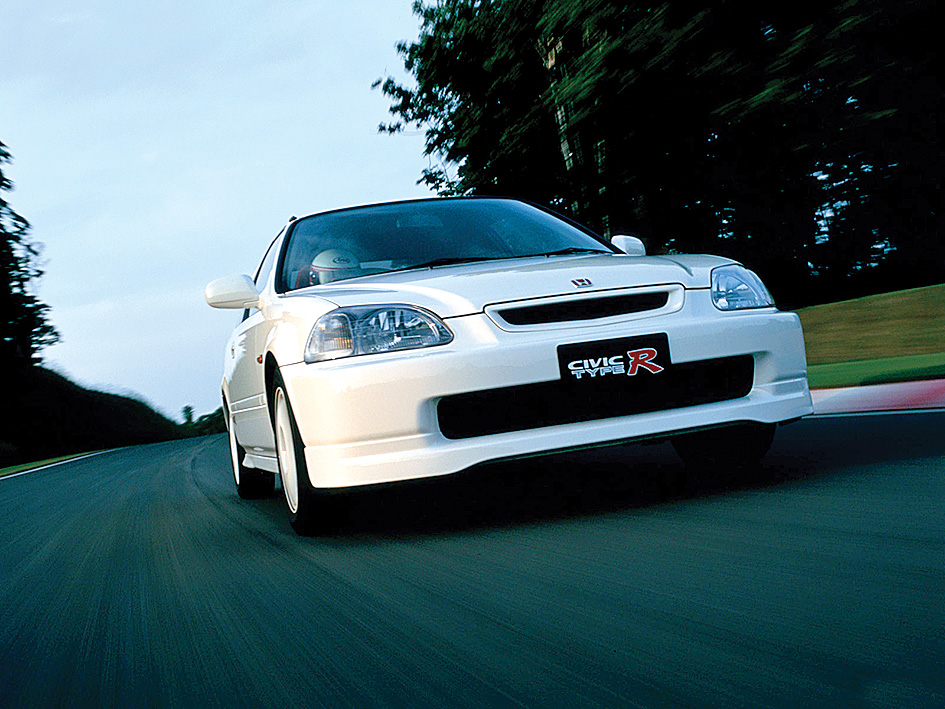
To put the power to the ground, a close-ratio, five-speed box and helical LSD back the motor, with larger brakes, a quicker steering ratio, and specially tuned, double-wishbone suspension on the chassis side of things. Iconic red Recaros adorned the interior. The factory front lip and rear wing are heavily sought-after for base-model upgrades today.
Things really went off the deep end when Honda released the Type R N1 — one of those models where you pay more to receive less. Air conditioning, power windows, power steering and radio were yanked out — or rather, omitted on the production line — in the pursuit of weight-shedding. Oddly enough, at the same time, a Type Rx was offered, which came with all those luxuries, and more.
The EK9 was never sold new in New Zealand, but has always been popular due to its affordability, thanks to the relaxation of import laws. Tuners found it particularly appealing as it ran the same suspension plate as the EG Civics and DC2 Integras. In today’s market the EK9’s light weight and rigidity (in standard form) gives it a big advantage compared to its younger brothers (EP, FD, FK) — even if it is down on power — and the short wheel base allows it to work well on tighter tracks and winding roads.
Parts remain in good supply, and upgrades are delivered by the truckload. With 20 years under its belt, all the development has gone into aftermarket upgrades, so the EK9 remains an easy way to go fast without blowing a huge amount of time and big sums of money.
Engine: B16B, 1600cc, straight-four
Drivetrain: Close-ratio five-speed manual, helical LSD
Interior: Red Recaros, red door cards, red Type R floor mats, titanium shift knob, Momo leather-wrapped steering wheel
Exterior: Three-door hatch; upgraded front lip and rear wing
Wheels: 15×6-inch (+50); 5×114.3
Suspension: Double wishbone
Retail: ¥1,998,000 JPY ($25,553 NZD)
EP3 (2001–2005)
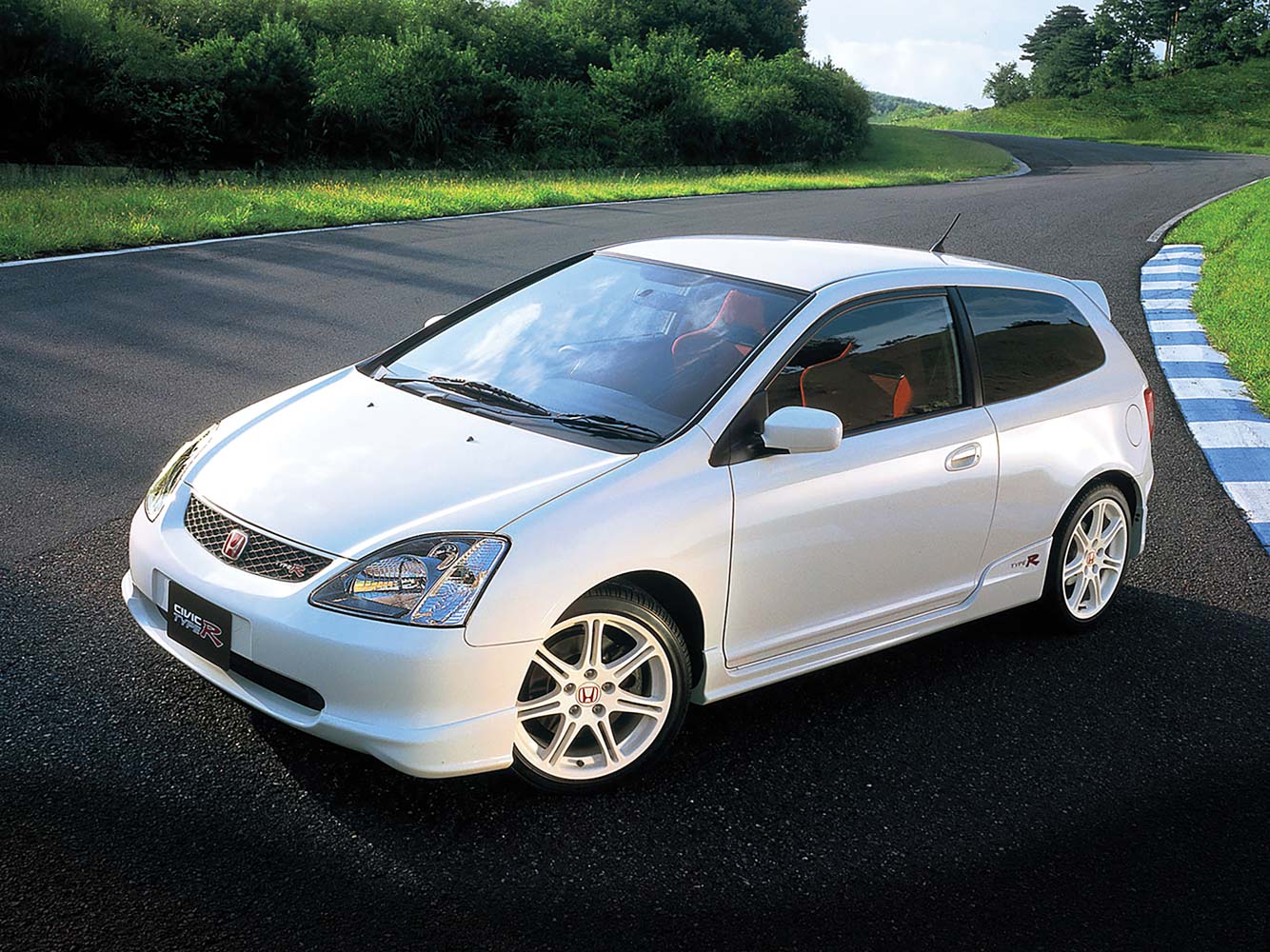
The second-gen CTR switched tact from a homologation style unit to a mass-market product, and was also the first of the performance models to be officially sold outside of Japan. It became available in the European markets — finding particular success in the UK, taking big swings at the Ford Focus and VW Golf GTI ranges. Even the weird, bread-van body styling and dash-mounted gearshift didn’t put people off, and the new heart kicked off a new era of power–to-weight hot hatches.
Manufacturing was relocated halfway across the world to Swindon, England, with market models (both Japanese and Euro) manufactured there. The EP3 was now powered by Honda’s new two-litre powerhouse — to this day, one of the most powerful naturally-aspirated engines from the automaker. The Japanese version used the K20A, producing 158kW. It offered up a balanced crank, RRC intake manifold, uprated exhaust manifold, higher-lift camshafts, high-compression pistons (11.5:1), and progressive tuning.
All of the Japan-spec powertrain components were built in Japan and shipped directly to the the Swindon plant for assembly, whereas the Euro version featured a slightly watered-down, UK-built K20A2 with a healthy 150kW. Both models still shipped out with a seam-welded chassis and close-ratio, six-speed box, but Japanese models received an LSD, iconic red Recaros, and a more track-focused suspension set-up which was easier to tune than its predecessor — absent on Euro models.
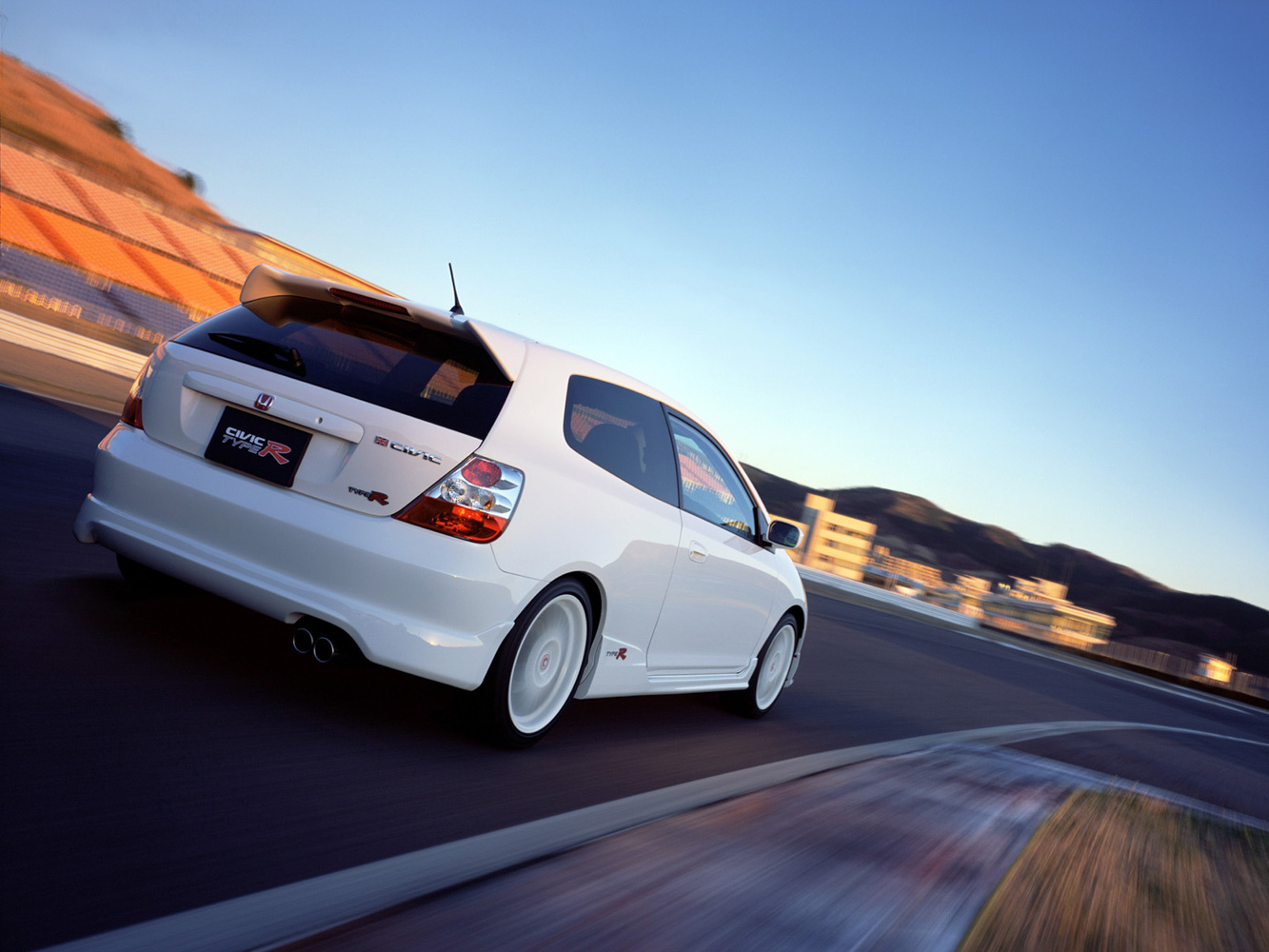
The year 2004 saw the release of a facelift model aimed to upgrade a few of the car’s downfalls — critics claimed to experience understeer on the limit as a result of the the front MacPherson strut setup, a mediocre steering response, and a lack of low-end torque. To address these claims, Honda installed electronic power steering, revised suspension componentry, and a lighter clutch and flywheel setup. Mugen produced a factory-upgraded JDM CTR that featured a new exhaust system and in-house tuning, a Mugen grille, and sway bars for better handling.
Across the board, the EP3 was well-received, and Jeremy Clarkson claimed it to be one of the greatest hot hatches to date. The second-gen can be credited with the CTR’s longevity, carrying on the experiment of the first generation and making it a staple performance product for Honda. It was also recognized by the mainstream media, which helped to cement it as a feasible sell to a wider audience. Ironically, the EP3 (JDM) remains rarer in Japan, with only around 4700 currently registered.
Locally, the EP3 hasn’t been as popular as the EK9, even though it has a power advantage through running the two-litre heart and six-speed box. This lack of popularity is mostly due to the handling and the suspension being tricky to set up. Due to the front MacPherson strut design, steering is connected directly onto the shock, which makes the car harder to turn, and this has caused issues with bump steer.
Engine: K20A, 1998cc, straight-four
Drivetrain: Close-ratio six-speed manual, helical LSD
Interior: Red Recaros, titanium shift knob, Momo leather-wrapped steering wheel
Exterior: Three-door hatch
Wheels: 17×7-inch (+45); 5×114.3
Suspension: MacPherson strut
Retail: ¥2,200,000 JPY ($27,877 NZD)
FD2 / FN2 (2006–2011)
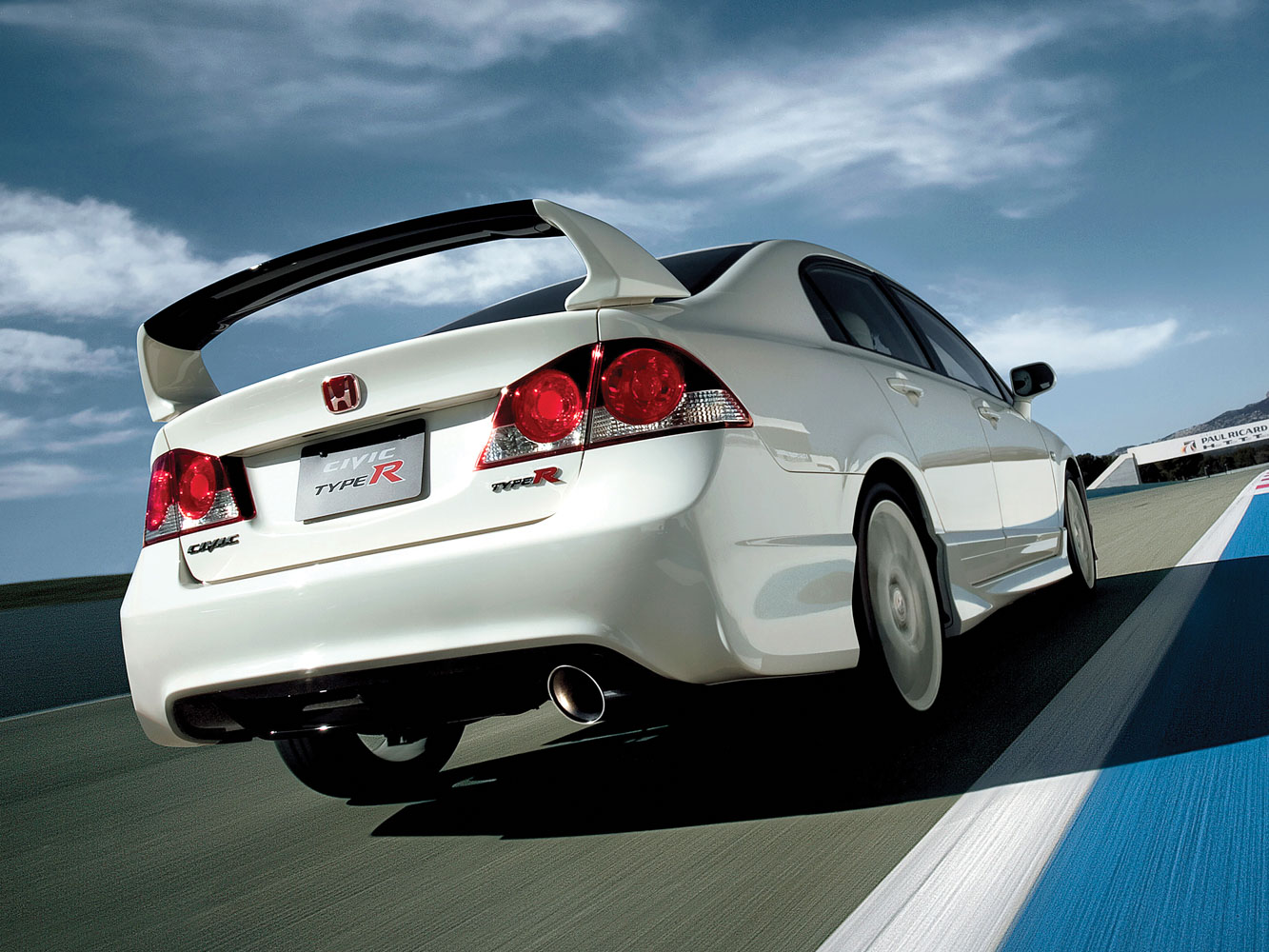
For the third-gen, the Japanese (FD2), and Euro (FN2) models were treated as completely distinct models, and for good reason. Manufacture of the FD2 returned to the Suzuka plant while the FN2 remained at Swindon. But what really set these two models apart from one another was their configuration; for the first time, the Japanese CTR was sold as a four-door sports sedan rather than the three-door hot hatch that the model had become known for.
Because the Japanese market four-door sedan was used as the base model, the CTR was now bigger, wider, and heavier than ever. However, the benefit of this was that the wheelbase grew 230mm, aiding in high-speed cornering. Meanwhile, in Europe, the FN2 was offered only as a three-door hatch. The chassis was completely different to that of the base model Civic, and used a different internal layout — noted for housing the fuel tank underneath the driver — and would go on to serve as a base for the Honda Fit/Jazz.
Engine-wise, Japanese models were equipped with an Accord Euro R CL7-based K20A for its longer intake manifold. Fly-by-wire throttle control was added, and the valve ports recieved the same treatement found on the NSX heads. Honda claims that mid-range increased by 7kW after being fed through the close-ratio, six-speed box and helical LSD combo. The front calipers were beefed up with four-pot Brembos and the DC5R’s 300mm rotor upped to 320mm.
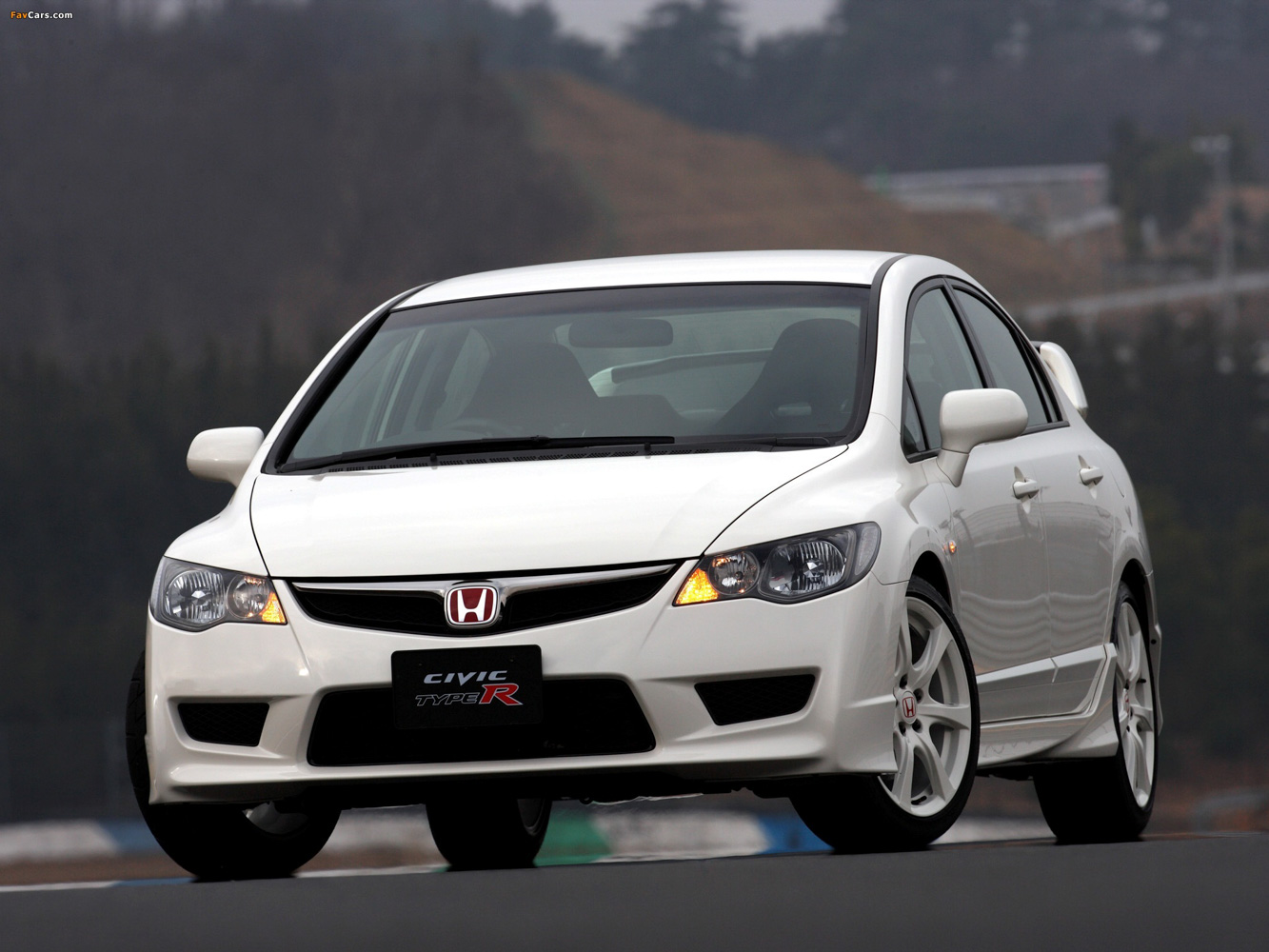
To save weight, engineers steered away from the seam-welded chassis of previous generations in favor of aluminium materials, bonding with adhesive instead — yet Honda maintains that tests proved the FD2 to be 50 per cent more rigid than the Japan-only DC5R, weighing in just 1.8kg heavier (for a total of 1,260kg). Whereas the FD2 featured a new, independent rear suspension, the FN2 was given the “less complex” torsion beam configuration. Some critics claimed that it was technically inferior to the multi-link setup of the EP3. Although many will admit that it still handled well, it did result in a harsher ride quality.
Outside, the FD2s styling took on sci-fi-esque look in the name of aerodynamics. The front bumper was a wider version of the Civic base-model design, with a diffuser incorporated into the rear bumper, and the package topped off with a large rear wing. Inside, the now trademark Recaro seats and Momo steering wheel had disappeared, replaced by versions designed in-house at Honda.
Back to back tests proved the FD2, on average, one-second quicker than the DC5R at Tsukuba Circuit (1:07.49), and four seconds at the longer Suzuka Circuit (2:35.20; driven by Keiichi Tsuchiya). Production ceased in August, 2010, after 13,000 units. This was due to upcoming emission requirements that Honda’s high-revving, naturally-aspirated engine just couldn’t meet. Swindon continued to make the FN2 until December of the same year, even exporting units to Japan, marketed as the limited edition Civic Type-R EURO. The FD2/FN2 would be the last of the non-turbo CTRs, as Honda recognized that it had begun to struggle against the pace of more powerful turbocharged rivals.
Locally, the FD2 has remained on the higher price scale, but is more sought-after than the EP3. This is because, although it uses a MacPherson strut design too, steering was altered to connect the shock to the hubs in order to eliminate the bump steer issue. To make up for its weight gain in the four-door sedan configuration, the gear ratio was altered and equipped with a 5.1:1 final drive ratio to make for better acceleration. This configuration proved to be a popular casual track day option with superb handling, and with a little weight reduction, it is often quicker than the EK9 and EP3.
FD2
Engine: K20A, 1998cc, straight-four
Drivetrain: Close-ratio six-speed manual, helical LSD
Interior: Honda-produced seats and steering wheel
Exterior: Four-door sedan; aero front and rear bumper, Type R rear wing
Wheels: 18×7.5-inch (+55); 5×114.3
Suspension: Independent rear suspension
Retail: ¥2,835,000 JPY ($35,989 NZD)
FN2
Engine: K20Z4, 1998cc, straight-four
Drivetrain: Close ratio six-speed manual
Interior: Honda-produced seats and steering wheel
Exterior: Three-door hatch
Wheels: 18×7.5-inch (+55), optional 19×8-inch 9 (+50); 5×114.3
Suspension: Torsion beam axle
Retail: ¥3,000,000 JPY ($38,272 NZD)
FK2 (2015–2016)
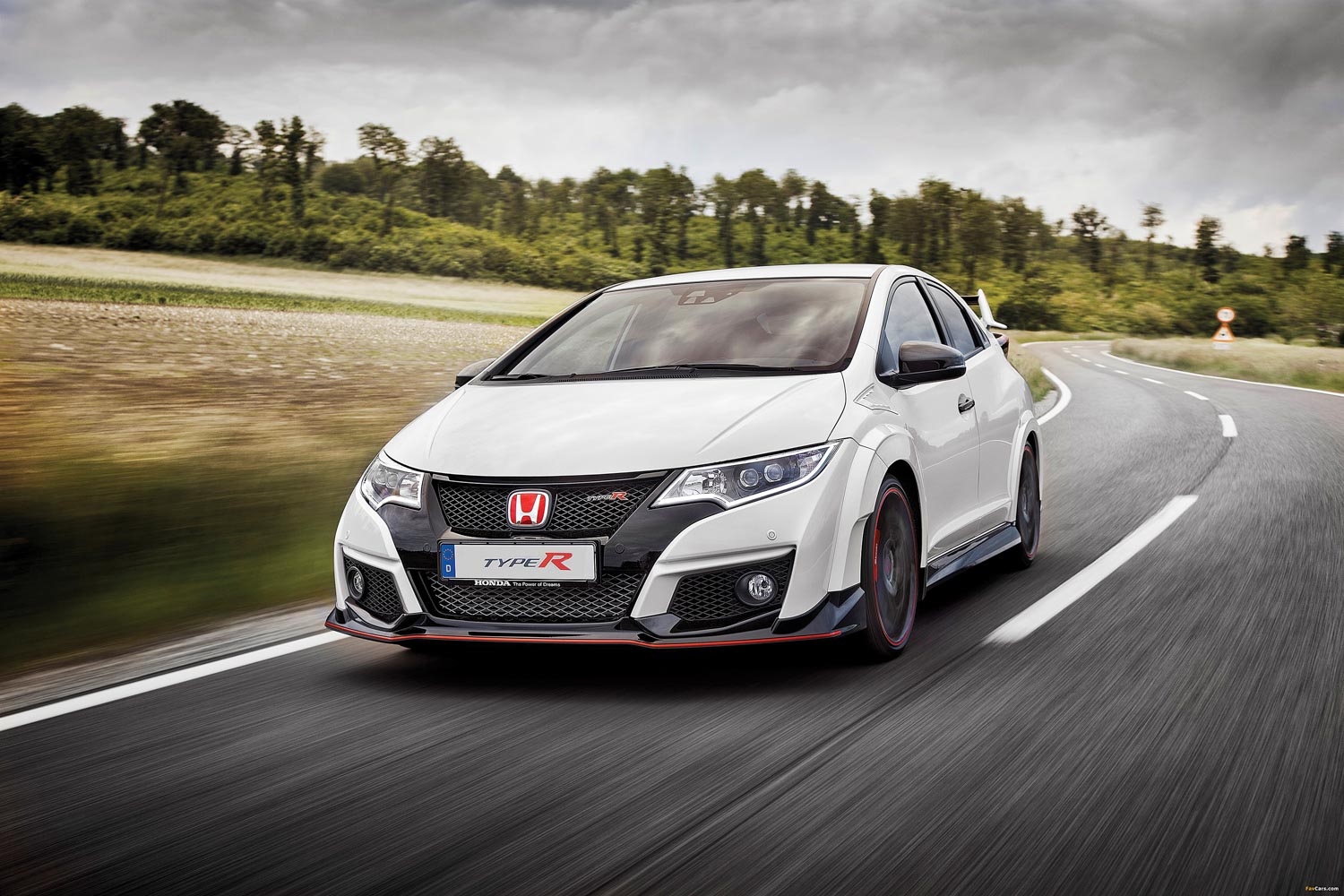
The fourth-gen CTR ushered in a new era of super Civics — instead of the iconic symphony that is a screaming, naturally-aspirated V-TEC engine with the ability to rev to the moon and back, Honda succumbed to the allure of boost. An inevitable switch to snail-power meant masses more power — 70kW more than the previous generation, in fact.
The new K20C1 powerhouse produced a whopping 228kW and was the first Type R engine to be built on U.S shores (at the Honda Anna Engine Plant in Anna, Ohio), before being shipped to Swindon — by now, Suzuka had been retired from CTR manufacturing. Mated behind the k-heart is a six-speed box with a factory equipped plate-style LSD.
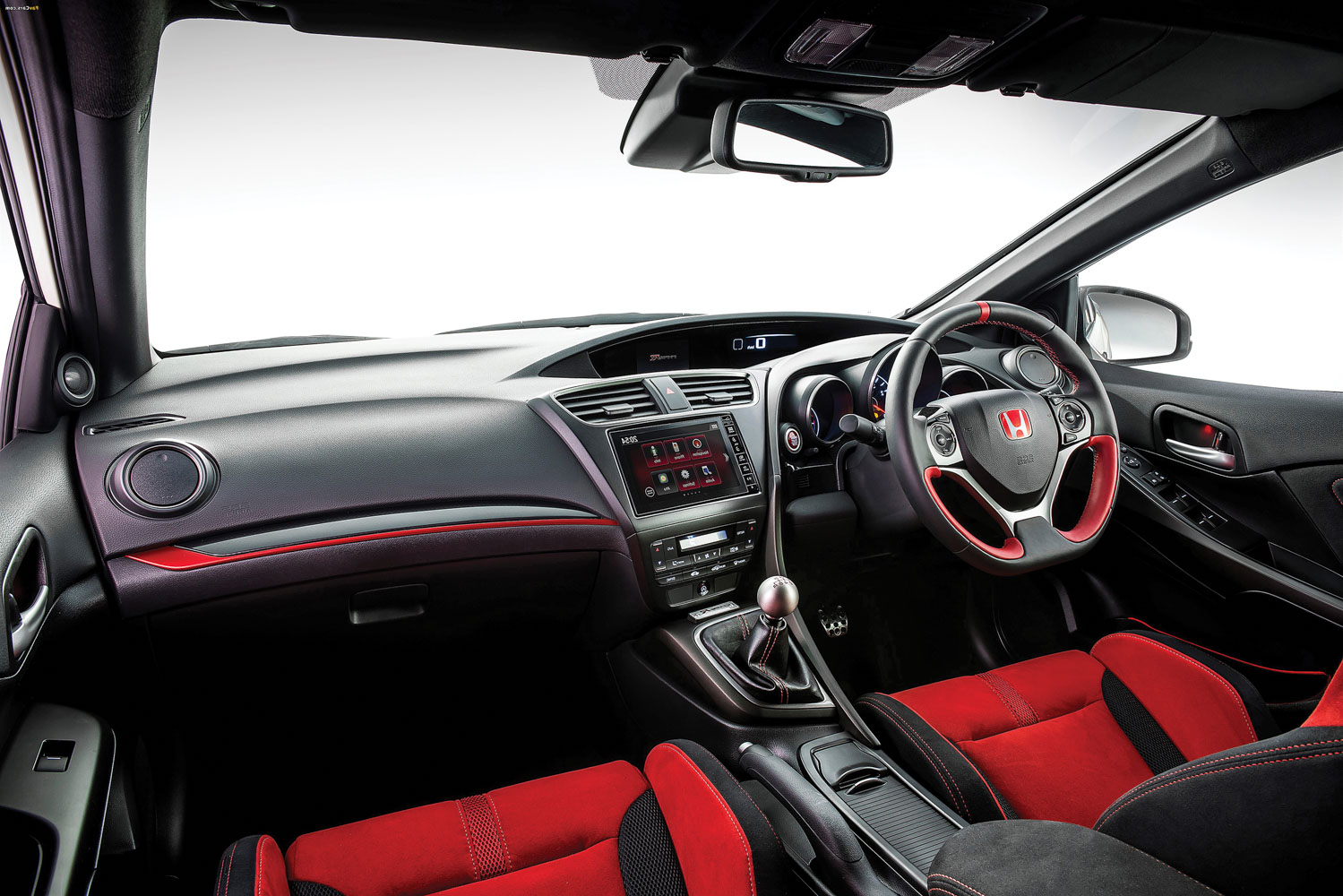
The FK2 briefly claimed the title of fastest front-wheel-drive production car at Nürburgring (now held by its younger brother, the FK8) and Honda claimed it could do 0-60mph in 5.7 seconds. However, owners have reported to have bested this at 5.2 seconds, and a quarter-mile of 14.1s at 169.9kph — with speed topping out at 269kph. The addition of turbo marked the CTR’s revival from the dead, bringing it up to play with the likes of the Golf R and Focus RS. Outside, the body styling combines the FN2 size with a five-door hatch configuration and implements a WTCC-inspired aero kit.
Honda Yuasa Racing driver, Gordon Shedden, acheived the FK2’s first major win in the British Touring Car Championship (BTCC) after claiming both the driver’s and the manufacturer’s championship titles in 2015. In the same year, Honda toured a road-going version (Euro R) across Europe with the aim of clocking up benchmark times for front-wheel-drive production cars at five legendary circuits. Utilizing the likes of three-time British Touring Car Championship winner Matt Neal, Honda Racing’s new boy, Rob Huff, Hungary’s Norbert Michelisz, and Portuguese racer and WTCC safety car driver Bruno Correia, the team set blistering times across the board. Philip Ross, Senior Vice President of Honda Motor Europe, commented, “This challenge secured [the] Civic Type R’s position as the benchmark in the front-wheel-drive performance segment.”
Engine: K20C1, 1998cc, straight-four
Drivetrain: Close-ratio six-speed manual, plate-style LSD
Interior: Honda-produced seats and steering wheel
Exterior: Five-door hatch; WTCC-inspired aero
Wheels: 19×8.5-inch (+60); 5×120
Suspension: Independent rear suspension
Retail: ¥4,280,000 JPY ($54,601 NZD)
FK8 (2017–)
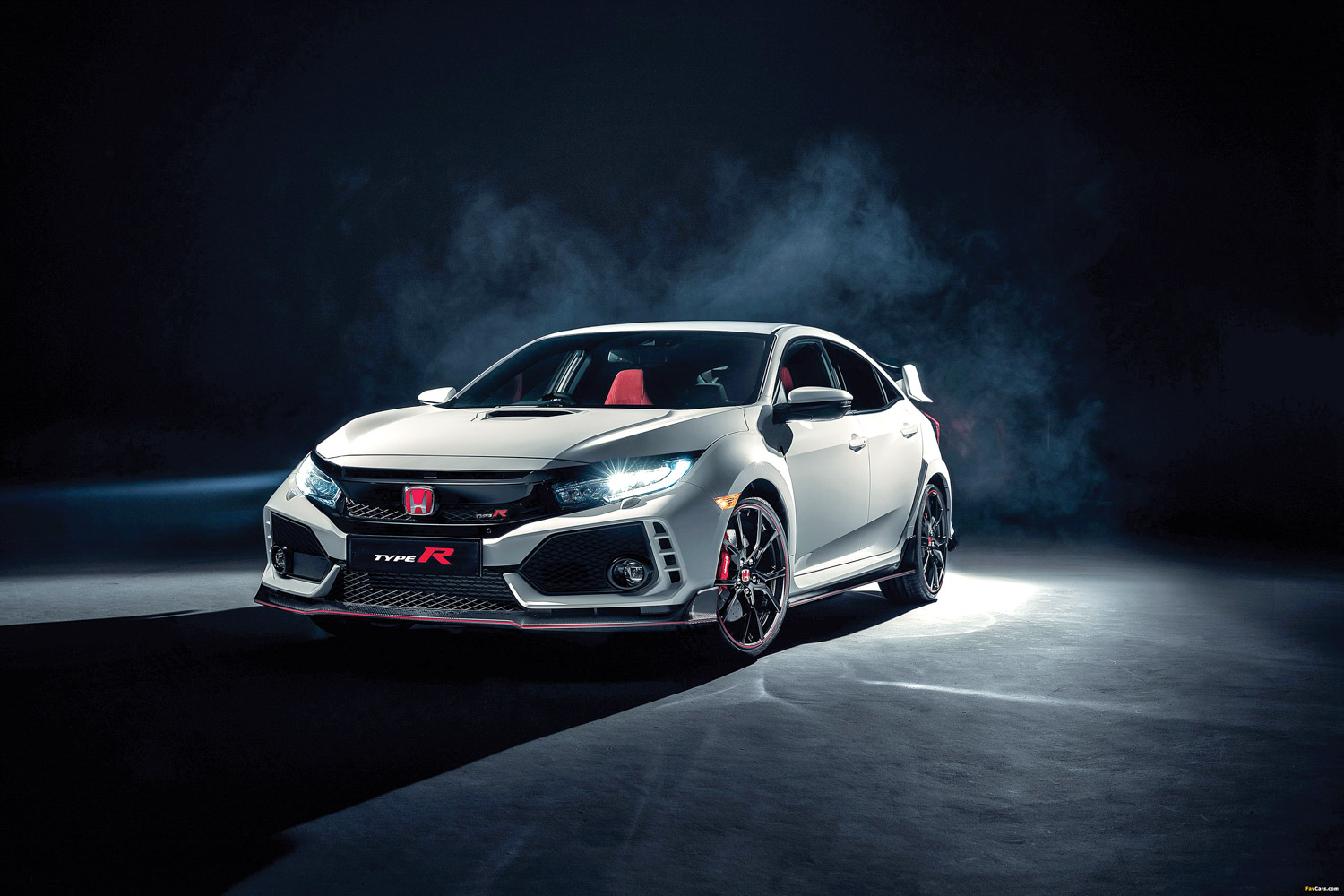
Sharing the same all-new platform from the new 10th-gen Civic, the fifth-gen CTR is on sale now with arrival in New Zealand set for late September. It will retain the same configuration turbocharged 228kW k-heart, with 400Nm of torque, and six-speed manual box — yep, unlike many of its counterparts today, there will be no auto or CVTs found here. It’s a mean looking bastard, too: receiving a winged carbon splitter and diamond-mesh intakes up front; larger arch flares; carbon side skirts; a carbon diffuser below the wider rear bumper; and, topping things off, a big ol’ wang on the rear and subtle aero touches for extra visual impact. Oh, and you get not one, or even two, tailpipes, but three. Don’t ask us why, but it’s a thing.
Offered in a single trim — this CTR doesn’t muck around: you get what you’re given and you take it with a smile, or else. But underneath is where this CTR gains all its performance cred, as Honda have made a ton of changes — now it’s what it always should have been. This time around they’ve made use of the ‘Dual Axis’ front strut design, separating the new alloy knuckle and strut to disconnect the steering and suspension forces. Honda claims that this technique will reduce torque-steer and improve steering feel; something that past generations have been criticized for. Torsional rigidity has been increased by 38 per cent and there’s a 45 per cent gain in bending rigidity compared to the previous gen.
The CTR has three driving modes which drastically change the ride from Comfort to Sport and +R for the track. Mode changes see the steering weight, throttle response, stability control, and adaptive dampers tweaked. And for those of you struggling with your heel-toe technique, automatic rev-matching which uses automatic throttle blips for smoother shifts and power delivery. Stopping power comes in the way of Brembo four-pot alloy calipers and 350mm cross-drilled rotors up front, with solid 305mm rotors down back.
This is the same car that smashed the front-wheel-drive production car lap record around Nürburgring, clocking a 7m 43.8s lap time. Although the hardcore purists may turn up their noses at the introduction of turbo, the CTR still wears the crown as the ultimate performance Civic. We look forward to getting our hands on one for a thorough thrash test in our next issue.
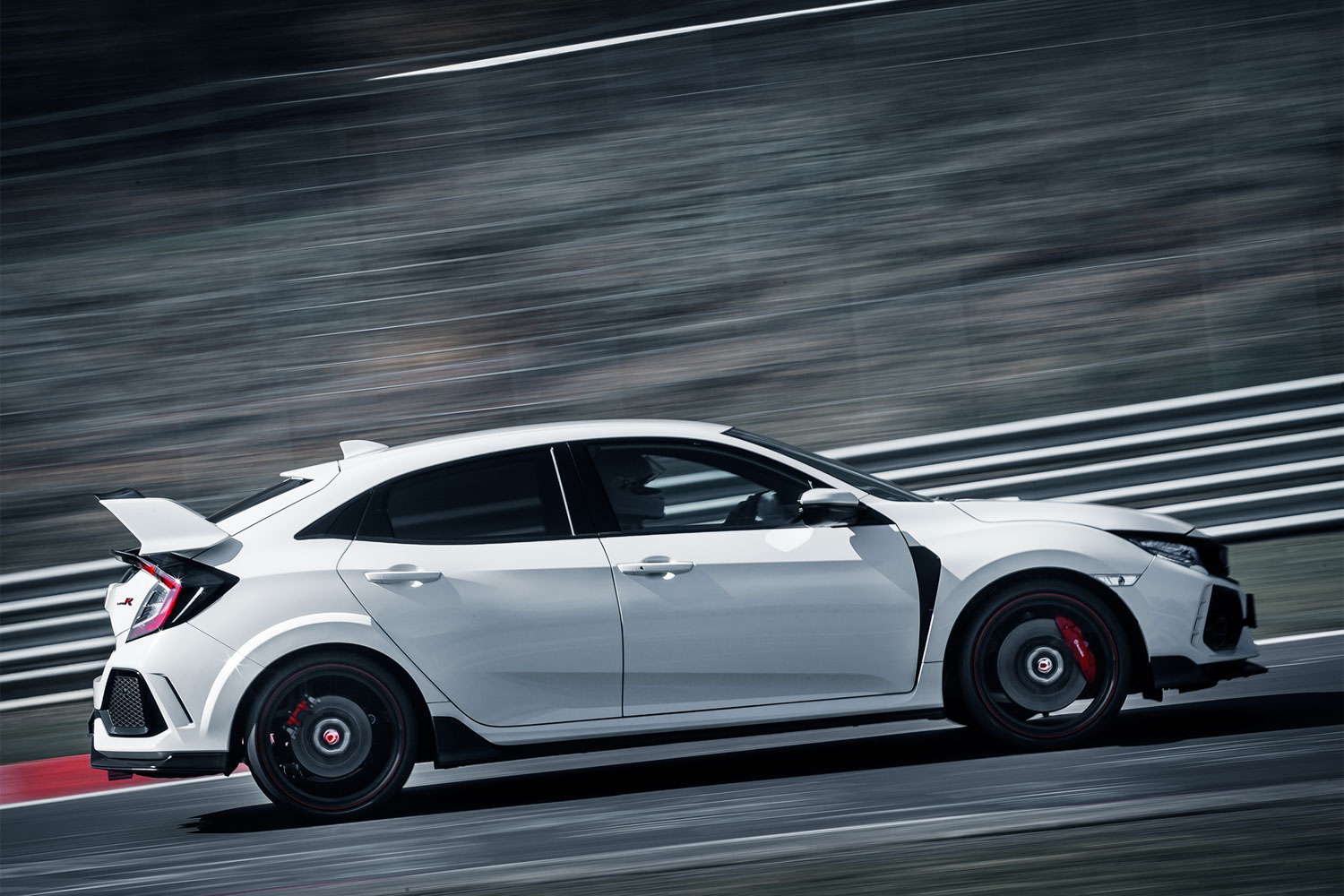
Engine: K20C1, 1998cc, straight-four
Drivetrain: Close-ratio six-speed manual, helical LSD,
Interior: Type R exclusive seats, detailing and steering wheel
Exterior: Five-door hatch; winged front carbon splitter, diamond-mesh intake vents, enlarged arch flares, carbon side skirts, rear carbon diffuser, wider rear bumper, rear wing, triple exhaust tips, smoked lenses on LED headlights, indicators, side repeaters, roof peak vortexes
Wheels: 20×8.5-inch (+60); 5×120
Suspension/brakes: Dual Axis front struts, Independent rear suspension, adaptive dampers; Brembo four-pot alloy calipers, 350mm cross-drilled front rotors, solid 305mm rear rotors
Retail: $59,900 NZD plus on-road costs





